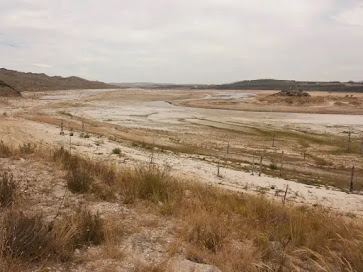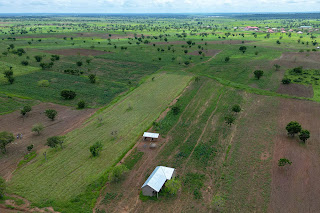Is Growndwater a future-saving resource?
Scarce and deteriorated water
Agriculture is already Africa's largest consumer of water. In response to global warming, irrigation is crucial because it enables farms to get drainage during dry spells. In the interviews with African scientists, it was highlighted that Ethiopia is expanding its large-scale irrigation programme while Tanzania has a well-distributed irrigation system. Food output in Africa may be doubled, yet just 6% of all farmlands is irrigated.
In a warmer world, the increasing proportion of irrigated land needed for food security and poverty reduction would put additional burden on people and the environment. Sub-Saharan Africa has had the greatest pace of urban expansion in the world since the early 1970s, with an average annual rate of 5% (Todaro, 2000). By 2050, there will be six persons per hectare of arable land in Uganda, increasing strain on food supplies.
Soil erosion persisted when vegetation was cleared away. It combined with an increase in unsustainable agricultural practises, such as the use of pesticides and fertilisers, and water contamination (Awuah, et al., 2009), particularly from urban sewage effluent. These dangers to food and water quality are increasing food prices, famine, and health.Without making accommodations for such rapid desertification and accelerated land degradation would reduce productivity (Lapworth et al. 2017).
Potential impacts of groundwater
Surface water seems no longer dependable in a warming world. Groundwater, typically accessible via wells and boreholes, provides a considerable buffer for rural Africa when combined with a low evaporation rate (Johnston & McCartney, 2010).In Sub-Saharan Africa, utilising groundwater irrigation's "enormous" potential might result in triple win: increased agricultural productivity, environmental sustainability, and social equality. International Water Management Institute (IWMI)Investing in motor pumps to expand such irrigation could benefit an estimated 185 million people, generating revenues of US$22 billion a year across the continent.
 |
| Figure 1:Irrigation pipes Mozambique |
It could help cities guard against shocks such as the “Day Zero” water crisis in Cape Town and it could lessen the impacts of recurrent droughts. For example, it could help increase sub-Saharan Africa’s current irrigated land area, which is currently 3% and kickstart green recovery in African countries
The challenge of using groundwater
First, many areas of Africa contain groundwater aquifer storage that recharges when it rains. Studies have revealed a non-linear relationship between these occurrences and groundwater recharge owing to borehole output and depth to groundwater. With regard to population settlement, it likewise has an unequal GW distribution around Africa. This resource has not yet been subjected to a thorough scientific investigation in its location, quantity, quality and mineralogy. This calls for amplifying African voices (Kombe et al., 2014) in contributions to research. Blind abstractions are not sustainable!
 |
| Figure 2: Map of GW storage and recharge rates in Africa |
Second, technology and budget are difficulties in Africa; the cost of well drilling and maintenance is expensive for local (e.g. in Tanzania). Additionally, the drop in water tables will lead to ground salinization and higher pumping costs for abstraction since high demand frequently coexists with poor recharge rates (MacDonald et al., 2012). When there is a competition for groundwater, inequality worsens because the wealthy pump the water first, making it difficult for the rest.
There are lots of problems but also huge opportunities. As treating groundwater in a sustainable way and embracing the growth of knowledge and data, groundwater will be a strong potential for water and food security in Africa.



Comments
Post a Comment